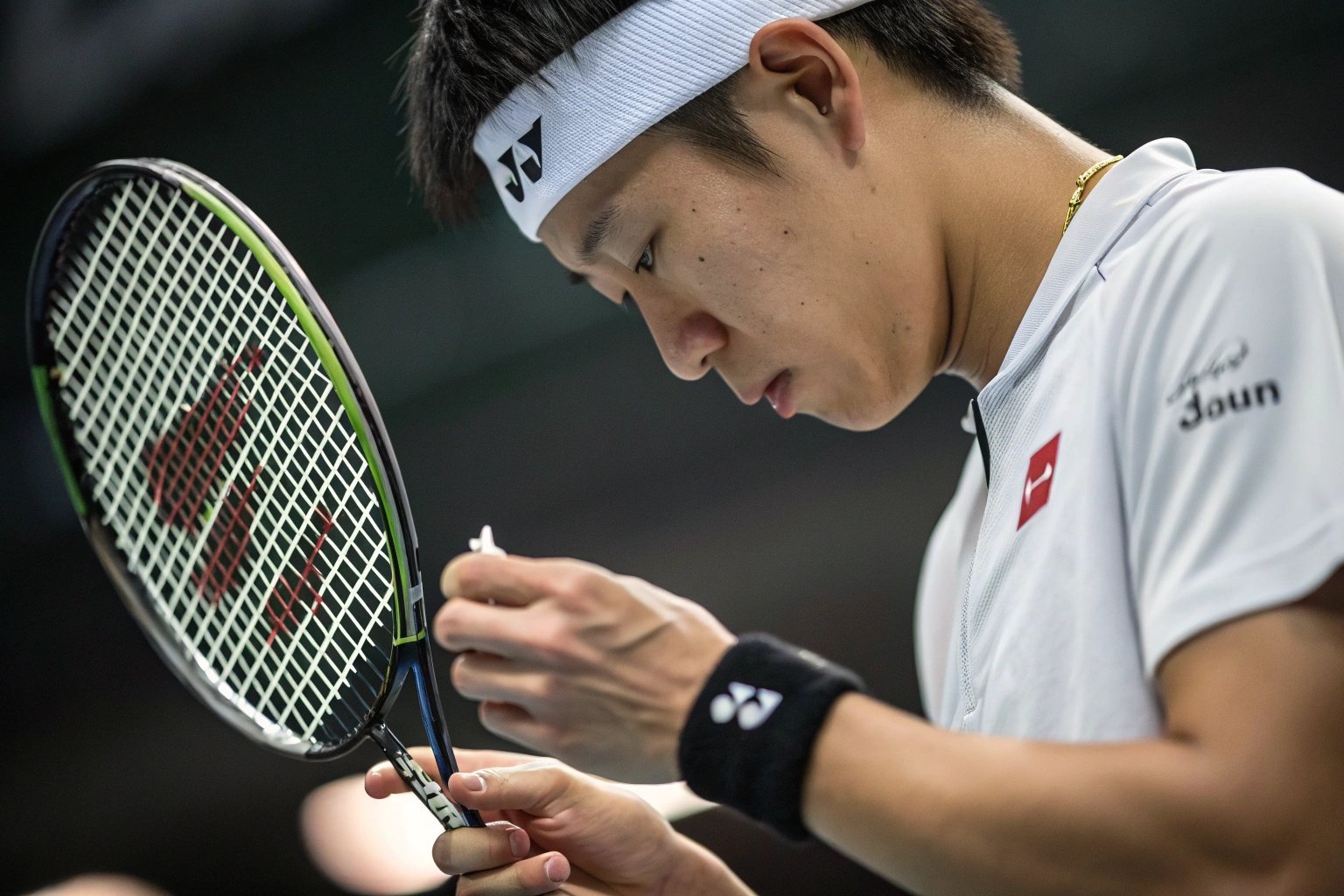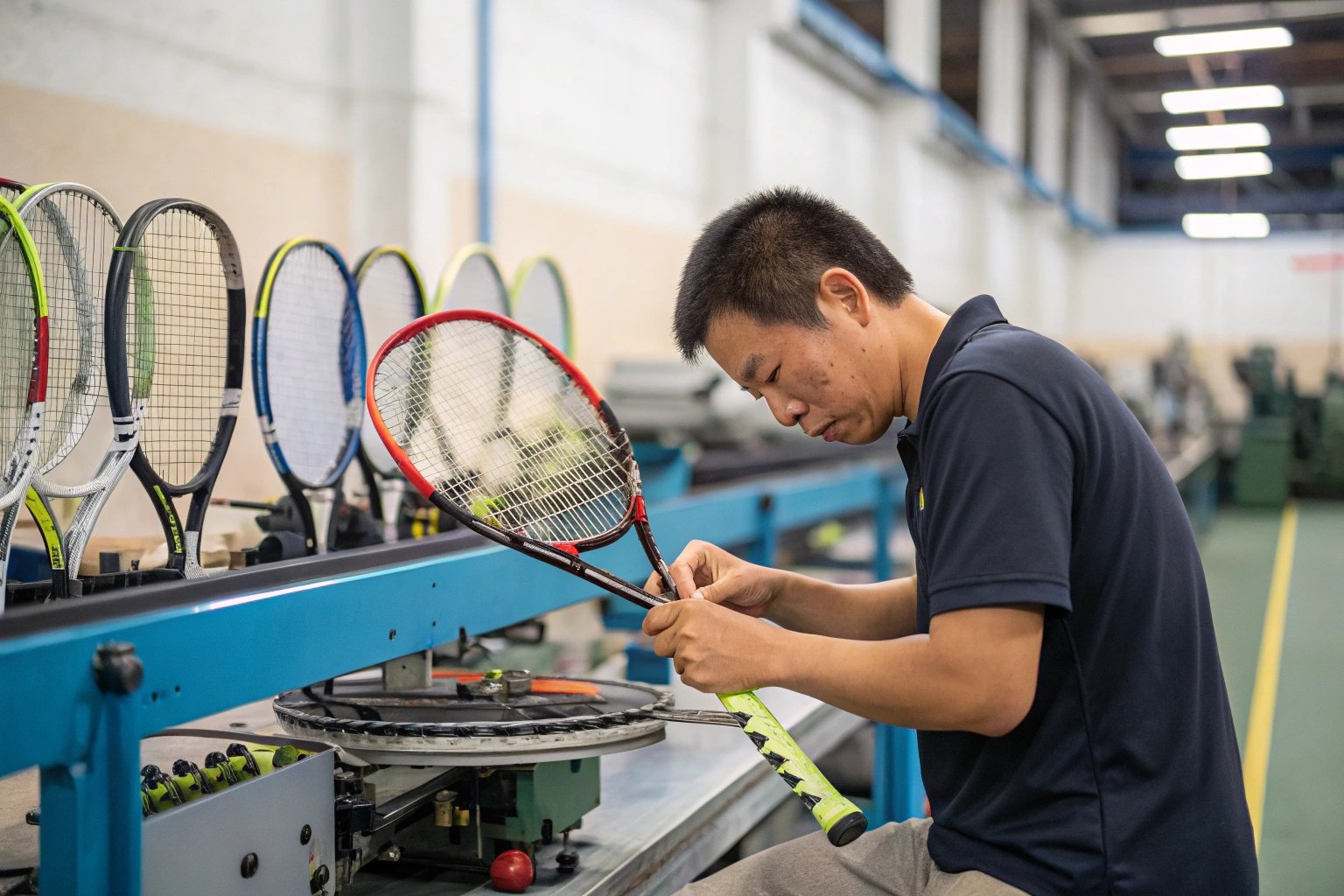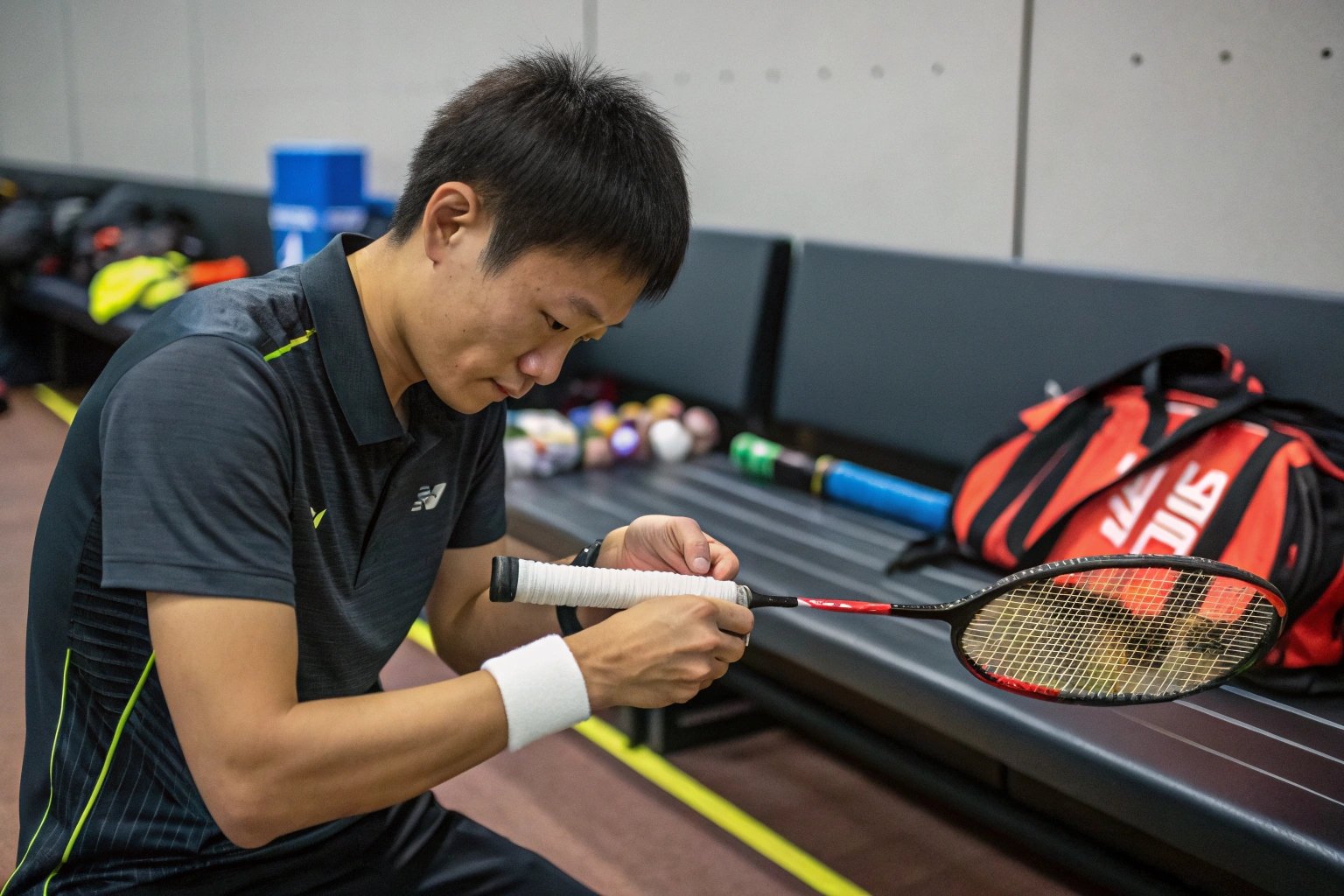Badminton is a sport that demands speed, precision, and control. While choosing the right racket is crucial, customizing your racket to suit your playing style can significantly enhance your performance on the court. From adjusting string tension to altering grip size, customizing your badminton racket ensures that it works with your unique strengths and preferences.

Customizing your racket can help you fine-tune your equipment, giving you the edge needed to elevate your game. Here’s how to personalize your badminton racket for optimal performance.
Customizing your badminton racket involves several factors, including grip size, string tension, balance, and even the type of strings you use. These adjustments can provide you with better control, power, and comfort during play. Here’s a step-by-step guide on how to tailor your racket to match your specific needs.
Choosing the Right Grip Size
The grip size is one of the most important customizations to consider when tailoring your racket for performance. An incorrect grip size can lead to discomfort, reduced control, and even injury.

For optimal comfort and control, the grip should fit comfortably in your hand, allowing you to hold the racket securely without straining your fingers.
To determine the right grip size, hold your racket and check if you can fit your index finger comfortably between your fingers and palm. If the grip feels too tight or too loose, it’s time to adjust.
- Small Grip: A smaller grip allows for better wrist action and quicker flicks, ideal for players who rely on fast, reactive shots.
- Larger Grip: A larger grip provides stability and control, which is better for players who focus on power and precision. However, it can reduce wrist flexibility, which may affect spin generation.
You can always use an overgrip to adjust the grip size slightly, especially if you're between two sizes. This not only helps with sizing but also adds comfort and cushioning.
Adjusting String Tension
String tension is one of the most effective ways to customize your racket’s performance. The tension of the strings influences the racket's power, control, and feel. Lower tension provides more power, while higher tension offers better control and precision.
Adjusting string tension based on your playing style and court conditions is a great way to fine-tune your racket for optimal performance.

- Higher Tension (28-30 lbs): A higher string tension increases control and accuracy, making it ideal for advanced players who can generate their own power. Higher tension results in less rebound, which gives players better control on shots, especially smashes and drop shots.
- Lower Tension (20-24 lbs): Lower tension offers more power with a larger sweet spot, making it easier to generate force. It’s great for beginners or players who want more power in their shots without requiring as much strength to execute them.
- Medium Tension (24-26 lbs): A good middle ground for most players, offering a balance between power and control.
The optimal string tension will depend on your style—whether you prioritize power, control, or a mix of both. It's also a good idea to adjust tension based on court conditions. For outdoor play with wind, higher tension can improve control, while lower tension is better for indoor play where you have more consistent conditions.
Altering the Balance of Your Racket
The balance of your racket can make a big difference in how it feels during play. The weight distribution determines how the racket handles in different situations. There are three main types of balance: head-heavy, head-light, and even balance.

Adjusting the balance of your racket will affect your power, control, and maneuverability.
[image placeholder]
- Head-Heavy: A head-heavy racket gives more power to your smashes and clears. It’s perfect for aggressive players who focus on attacking shots. This type of balance provides more momentum for powerful shots but may be harder to control in fast exchanges or net play.
- Head-Light: Head-light rackets are lighter at the top, which makes them ideal for quick reactions and fast net play. They allow for greater maneuverability, making them perfect for defensive players or those who rely on precision shots and quick reflexes.
- Even Balance: Rackets with an even balance provide a good mix of power and control, making them suitable for all-around players who need versatility in both offensive and defensive play.
Many manufacturers allow you to customize the balance by adding weight to the head or handle of the racket. This can be done using lead tape, which is a simple way to adjust the weight distribution based on your preferences.
Selecting the Right Strings for Your Playing Style
The type of strings you use can also significantly impact your game. Different string materials and gauges (thickness) offer various benefits in terms of durability, power, control, and feel.
Choosing the right strings ensures that your racket delivers the performance you need, whether you're focused on power, control, or durability.
- Nylon Strings: These are the most common type of strings and are affordable, durable, and provide a good mix of power and control. They are ideal for beginners or casual players.
- Polyester Strings: These strings are more durable and provide excellent control, making them a favorite among advanced players who prioritize precision and control. However, polyester strings are stiffer and can be hard on the arm.
- Natural Gut Strings: Known for their superior feel, natural gut strings offer great power, control, and comfort. These strings are typically used by professional players who want the best performance but come at a higher price.
- Gauge: The thickness of the string affects power and durability. Thinner strings (around 0.65mm) offer better control and feel but are more prone to breaking. Thicker strings (0.70mm and above) are more durable but offer less feel and control.
You can experiment with different types of strings to find the one that best suits your playing style and court conditions.
Adding an Overgrip for Comfort and Control
An overgrip is an easy and affordable way to customize your racket’s handle. It adds extra cushioning, absorbs sweat, and allows you to adjust the grip size.
Overgrips can improve comfort, provide better control, and enhance your overall racket feel.

- For Comfort: If you find the original grip too hard or uncomfortable, adding an overgrip can soften the feel and provide extra padding, making long games more comfortable.
- For Control: Overgrips can also enhance your control by providing a firmer grip that prevents slipping, especially in humid or sweaty conditions.
- For Custom Grip Size: If your grip feels too small or too large, an overgrip can help adjust the size to better fit your hand.
Overgrips are available in various materials, including cushioned or tacky versions, so you can choose the one that fits your preferences.
Conclusion
Customizing your badminton racket allows you to fine-tune your equipment to your playing style and needs. Whether it's adjusting the grip size, string tension, racket balance, or the type of strings, these small modifications can have a big impact on your performance. By tailoring your racket, you can enhance your comfort, control, power, and overall gameplay, making every match feel more in tune with your strengths.